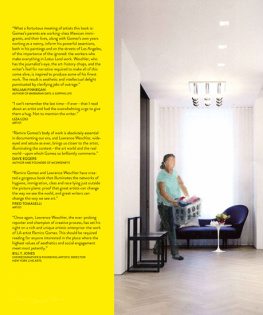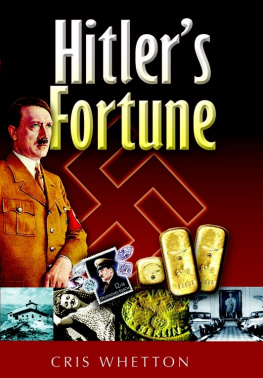Scorza Cris - Domestic Scenes: The Art of Ramiro Gomez
Here you can read online Scorza Cris - Domestic Scenes: The Art of Ramiro Gomez full text of the book (entire story) in english for free. Download pdf and epub, get meaning, cover and reviews about this ebook. year: 2016, publisher: Vearsa;Abrams, genre: Detective and thriller. Description of the work, (preface) as well as reviews are available. Best literature library LitArk.com created for fans of good reading and offers a wide selection of genres:
Romance novel
Science fiction
Adventure
Detective
Science
History
Home and family
Prose
Art
Politics
Computer
Non-fiction
Religion
Business
Children
Humor
Choose a favorite category and find really read worthwhile books. Enjoy immersion in the world of imagination, feel the emotions of the characters or learn something new for yourself, make an fascinating discovery.
- Book:Domestic Scenes: The Art of Ramiro Gomez
- Author:
- Publisher:Vearsa;Abrams
- Genre:
- Year:2016
- Rating:5 / 5
- Favourites:Add to favourites
- Your mark:
- 100
- 1
- 2
- 3
- 4
- 5
Domestic Scenes: The Art of Ramiro Gomez: summary, description and annotation
We offer to read an annotation, description, summary or preface (depends on what the author of the book "Domestic Scenes: The Art of Ramiro Gomez" wrote himself). If you haven't found the necessary information about the book — write in the comments, we will try to find it.
Domestic Scenes: The Art of Ramiro Gomez — read online for free the complete book (whole text) full work
Below is the text of the book, divided by pages. System saving the place of the last page read, allows you to conveniently read the book "Domestic Scenes: The Art of Ramiro Gomez" online for free, without having to search again every time where you left off. Put a bookmark, and you can go to the page where you finished reading at any time.
Font size:
Interval:
Bookmark:

Contents
Lawrence Weschler
Cris Scorza
The Domestic Idylls of Ramiro Gomez
Lawrence Weschler

David Hockney, American Collectors (Fred and Marcia Weisman), 1968
ONE AFTERNOON A WHILE BACK, in September 2014, I was in Chicago, taking in the masterpieces on a lazy walk through the new contemporary wing at the Art InstituteDe Koonings Excavation, the Cornell boxes, and a personal favorite, David Hockneys American Collectors (Fred and Marcia Weisman) from 1968 (with its incomparable California light streaming over the married couple, who are portrayed standing, clenched to either side, amid the trophies in their backyard sculpture garden, a picture that grows stranger and stranger the more you look at it, its coming as no surprise that the couple in question would presently divorce). Anyway, on my way out someone handed me a flyer for the Expo Chicago art fair, taking place concurrently out on Navy Pier, and so I meandered over there, made my way in, walked about, rounded a corner, and there on the outer wall of one of the booths directly ahead of me was exactly the same painting, same size, same palette, same light: David Hockneys American Collectors all over again.

American Gardeners (after David Hockneys American Collectors (Fred and Marcia Weisman), 1968), 2014
Only: not. For in fact there were no collectors. Or rather, the collectors had been cannily replaced, at exactly the same location in the picture and at exactly the same scale, by two dark-skinned Latino gardeners, standing at attention, warily gazing out toward me, one of them with a leaf blower sashed across his chest. Nor was this the only Hockney pastiche in the booth. There was also, for example, a fresh take on Hockneys iconic WILSHIRE BLVD. street sign, only this time with a commuting nanny tarrying underneath, waiting for her bus ().
RAMIRO GOMEZ read the legend on the installations wall, which also pegged the booth as belonging to the Charlie James Gallery in Los Angeles. Powerfully effective work, I remember thinking, though I also found myself wondering whether such Hockney-riffing wouldnt get old pretty quickly, if that were all there was. As if immediately to undercut such concerns, however, the booths interior featured a grid of framed smaller pieces as well: torn-out pages of sleek ads and photo illustrations from the pages of Architectural Digest and Vogue and Vanity Fair and their like, hawking this lighting fixture or that kitchen cabinetry or that other dream family in their dream backyard, onto which the artist had meticulously paintedoff to the side, in one case only barely reflected in a posh vanity mirror ()a nanny or housekeeper or gardener or handyman, faceless and self-effacing, almost though not quite to the point of invisibility (though, then again, emphatically not), the blur of paint on photo recapitulating the blur of status involved, the way the figures themselves both belonged and did not belong in the picture.

Perlas Reflection, 2014
Strange, I found myself pondering (or rather, being invited to ponder), gazing on this succession of elegant picture-perfect layouts: Did the very shininess of their photographic representation in those glossy magazines enforce a regime of similarly flawless and antiseptic presentation in the actual homes of the owners those magazines catered to (much as Photoshopped female models enforce a crushingly impossible standard on the actual women who consume those images), an expectation in turn requiring this veritable army of near-invisible workers endlessly scrubbing and raking and polishing away, workers as individually disposable as the stuff they were being required to dispose of, who might in turn themselves come to introject that very sense of disposability, of replaceability, of worthlessness into their own senses of self? Questions of relative worthiness and value seemed at any rate to be at the very heart of Gomezs interventions: In yet another instance, he had taken an ad featuring a luxurious silver Rolex watch lying on a gleaming white surface and painted in, to one side, the corner of a blue check (made out to the sum of $80), and off to the other side, a pink Post-it note with the scribble, Maria, 8 hrs = $80 ().

Marias Paycheck, 2013
At this point, as I was continuing to study the grid of magazine pages, the booths overseer, the aforementioned Charlie James himself, loped over and introduced himself. A large fervent glad-handing enthusiast, James was only too happy to talk about his artist Gomezthe Kid, as he repeatedly referred to him, endearingly, for Gomez, James now informed me, was only twenty-eight years old, born in San Bernardino, about seventy miles east of L.A., to at-the-time undocumented Mexican-born parents, his mother a school janitor and his father a trucker. From out of the local community college, Gomez had gotten a scholarship to CalArts, but somehow dissatisfied, hed left there after a year and gone on to work as a nanny himself for a young industry family in the Hollywood Hills, leaving their employ after two and a half years to launch into what was fast proving a markedly successful career. The Hockney canvases had sold almost as quickly as the Kid could produce themthe first of them, the original full-size version of No Splash, had been snapped up from the front vitrine at the gallerys inaugural Gomez show in January 2014 by San Diegos Museum of Contemporary Art, before the exhibit had even opened. The Kids done about ten of them, James related, but he says that thats it, hes not going to do anymore, the series has run its course and he has other fish to fry, which is too bad for me: I could have gone on selling those things for years, there was such incredible demand.
I mentioned that I was going to be out in L.A. a few months hence and asked if it might be possible to meet with the artist, and James assured me that that could be arranged.
WHICH IS HOW I CAME to be walking into the greensward of West Hollywood Park, on the opposite side of San Vicente Boulevard from the gleaming Pacific Design Center, one afternoon a few months later, alongside the young artist, whod ambled over to join me from the apartment a few blocks over that he shares with his longtime partner, David Feldman, a filmmaker and television editor. Jay, as he prefers to be called in conversation and has been since childhood (Ramiro Gomez Junior, that is, to distinguish him from his father, Ramiro Senior), was a handsome, clean-cut, soft-spoken, achingly empathic young man, casually dressed in brown corduroy pants and a well-worn blue V-neck sweater pulled over a gray T-shirt. The air was brisk but the place was bustling.
A beautiful day to be in the park, he was saying, and of course it is a park, but its also a workplace. Look around and youll see: A good eighty percent of the adults in a place like this, as in most of the leafy green parks on this affluent west side of L.A. at this time of day, are in fact workinggardeners, grounds keepers, nanniesand a substantial portion of those are Latino. This particular park holds special significance for me, since it was the place I brought my own toddler twins most afternoons during the two and a half years I was working as a live-in nanny for their parents, up in the hills over there.
Next pageFont size:
Interval:
Bookmark:
Similar books «Domestic Scenes: The Art of Ramiro Gomez»
Look at similar books to Domestic Scenes: The Art of Ramiro Gomez. We have selected literature similar in name and meaning in the hope of providing readers with more options to find new, interesting, not yet read works.
Discussion, reviews of the book Domestic Scenes: The Art of Ramiro Gomez and just readers' own opinions. Leave your comments, write what you think about the work, its meaning or the main characters. Specify what exactly you liked and what you didn't like, and why you think so.












